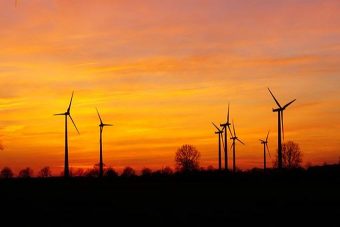
A new study from US researchers has shown that wind and solar power generation could reliably meet 80% of the country’s electricity demand, and 100% could be met by scaling up energy storage capabilities and capacity.
These are the key findings from a new study published this week in the journal Energy & Environmental Science by scientists from the California Institute of Technology, the Carnegie Institution for Science, and the University of California Irvine. The research is based on 36 years of weather data between 1980 and 2015 which was analyzed by energy experts Matthew Shaner, Steven Davis (of University of California Irvine), Ken Caldeira (of Carnegie), and Nathan Lewis (of Caltech).
“Our team took a simplified approach aimed at understanding fundamental geophysical constraints on wind and solar power,” explained lead author Matthew Shaner. “We looked at solar and wind power availability on an hourly basis across the U.S. and determined how much of current electricity demand could be met by varying amounts of solar panels, wind turbines, and energy storage, in addition to changes in the electricity grid.”
“We looked at the variability of solar and wind energy over both time and space and compared that to US electricity demand,” added Steven Davis. “What we found is that we could reliably get around 80% of our electricity from these sources by building either a continental-scale transmission network or facilities that could store 12 hours’ worth of the nation’s electricity demand.”
Such an expansion, while a tremendous infrastructure project, is not insurmountable, and the researchers found that the investments necessary are not beyond the realm of possibility. Between building a continental-scale transmission network and scaling up existing battery technologies to provide parallel 12-hour storage, or relying entirely on current battery technology to supply the entire necessary electricity demand, the cheaper option is by far the former — while it would still cost hundreds of billions, it’s nowhere near the trillions necessary to rely on batteries.
According to the research, wind and solar power resources complement one another in interesting ways. Peak generating capacity for solar hits in June and July, while wind resources peak in March and April, but slump in July and August. This means that the two sources can alleviate each other’s slow patches.
“The fact that we could get 80% of our power from wind and solar alone is really encouraging,” Davis said. “Five years ago, many people doubted that these resources could account for more than 20 or 30%.
But increasing wind and solar capacity to meet 100% of demand would require much greater and more expensive energy infrastructure changes needed to overcome seasonal cycles and weather events. Specifically, the 100% system would need to have the capability to store the generated electricity for weeks — instead of just hours, and well beyond current economic feasibility — or the ability to generate the surplus electricity, which would not necessarily be used frequently.
“Our work indicates that wind and solar would need to be supplemented by some kind of dispatchable power like natural gas or huge amounts of storage,” Ken Caldeira added. “The natural gas emits greenhouse gases and the storage is super expensive, so we need a search for better ways of supplying electricity when the sun is not shining, and the wind is not blowing.”
Source: cleantechnica.com


